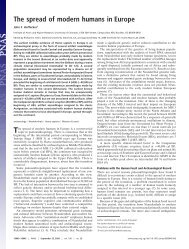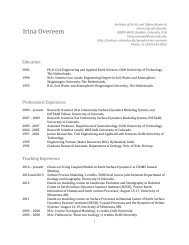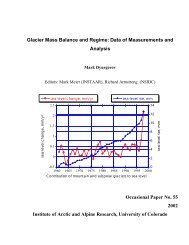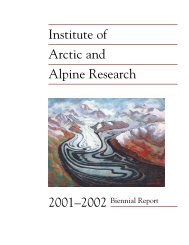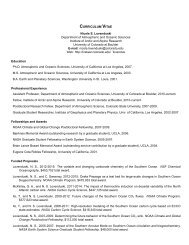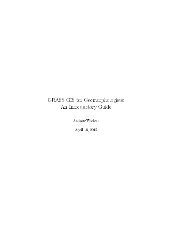Economic Feasibility Study of Colorado Anaerobic Digester Projects ...
Economic Feasibility Study of Colorado Anaerobic Digester Projects ...
Economic Feasibility Study of Colorado Anaerobic Digester Projects ...
You also want an ePaper? Increase the reach of your titles
YUMPU automatically turns print PDFs into web optimized ePapers that Google loves.
6.0 <strong>Economic</strong> Analysis: Budgeting and Sensitivity Analysis.<br />
6.1 Summary. This section presents an economic analysis <strong>of</strong> AD projects in <strong>Colorado</strong>. The<br />
economic analysis is comprised <strong>of</strong> an enterprise budget, a sensitivity analysis, and a<br />
summary/interpretation <strong>of</strong> findings.<br />
In summary, there is potential for a positive rate <strong>of</strong> return on co-digestion projects in the<br />
state <strong>of</strong> <strong>Colorado</strong>. Values used in the enterprise budget reflect a 3.66% annual return on<br />
investment. However, in order to achieve a positive return on investment, several key<br />
assumptions must be met, including $5.50/tonne carbon credits and controlled production<br />
costs. At present, conditions required for a positive AD project return are not favorable.<br />
Furthermore, due to the very small number <strong>of</strong> AD projects in the region, variations in the<br />
data may be observed when more AD units have been installed. To address this, three<br />
budgetary conditions have been proposed:<br />
• A baseline <strong>of</strong> “expected” economic conditions, showing a positive annual return on<br />
investment.<br />
• A budget modeling an approximate 20% reduction in each <strong>of</strong> the variables (unless<br />
otherwise specified) and a negative annual return on investment <strong>of</strong> -30.78%.<br />
• A budget modeling a 20% increase in each <strong>of</strong> the variables (unless otherwise<br />
specified) and a 46.45% return on investment.<br />
The enterprise budget and the accompanying financial assumptions for each <strong>of</strong> the<br />
conditions are discussed in Section 6.2.<br />
The sensitivity analysis measures the responsiveness <strong>of</strong> income to a 1% change in<br />
operational variables. In other words, the sensitivity analysis effectively accounts for price<br />
volatility and models how these price changes affect the viability <strong>of</strong> a project. Operational<br />
variables selected for the sensitivity analysis were identified through interviews with<br />
technology providers, agricultural operations managers, and academic and trade<br />
publications. In summary, operational income was most sensitive to changes in production<br />
costs. A 1% change in production costs resulted in a 14.54% change in income. Examples<br />
<strong>of</strong> production costs might include unplanned AD maintenance and increases in labor.<br />
Operational income was also sensitive to energy production. A 1% change in energy<br />
production capacity (which is a function <strong>of</strong> engine efficiency and energy prices) yielded an<br />
11.14% change in operational income. The results <strong>of</strong> the sensitivity analysis are consistent<br />
with anecdotal reports from agricultural producers, who report that changes in costs and<br />
energy production have a significant impact on project returns. An in-depth discussion <strong>of</strong><br />
the sensitivity analysis is presented in Section 6.3<br />
<strong>Economic</strong> <strong>Feasibility</strong> <strong>Study</strong> <strong>of</strong> <strong>Colorado</strong> <strong>Anaerobic</strong> <strong>Digester</strong> <strong>Projects</strong><br />
Prepared by Dr. Catherine Keske, <strong>Colorado</strong> State University<br />
August 2009<br />
Page 44 <strong>of</strong> 79



